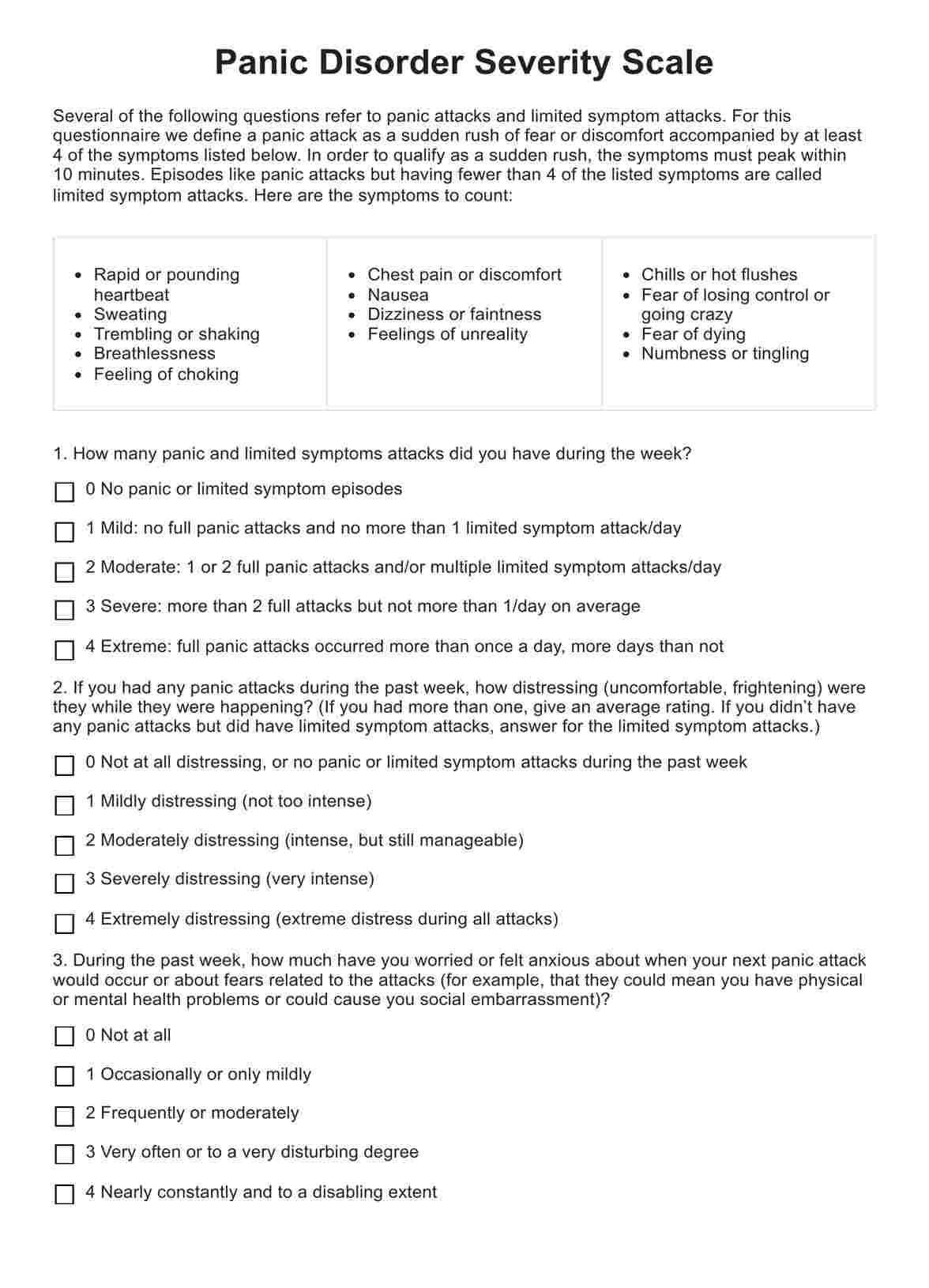Each item on the Panic Disorder Severity Scale is scored from 0 to 4, with a total possible score of 28. A score of 9 or higher suggests the need for a formal diagnostic assessment.

Panic Disorder Severity Scale
Use the Panic Disorder Severity Scale to gauge the symptoms of Panic Disorder in patients or yourself. Learn more about it through this guide.
Use Template
Panic Disorder Severity Scale Template
Commonly asked questions
Yes. The Panic Disorder Severity Scale works as a self-report scale, so feel free to use it! Just don't self-diagnose. If your panic frequency increased and have negatively impacted your mental well-being and daily life, please see a mental health professional.
The four different types of panic disorders are unexpected panic attacks, situationally bound panic attacks, situationally predisposed panic attacks, and nocturnal panic attacks.
EHR and practice management software
Get started for free
*No credit card required
Free
$0/usd
Unlimited clients
Telehealth
1GB of storage
Client portal text
Automated billing and online payments











